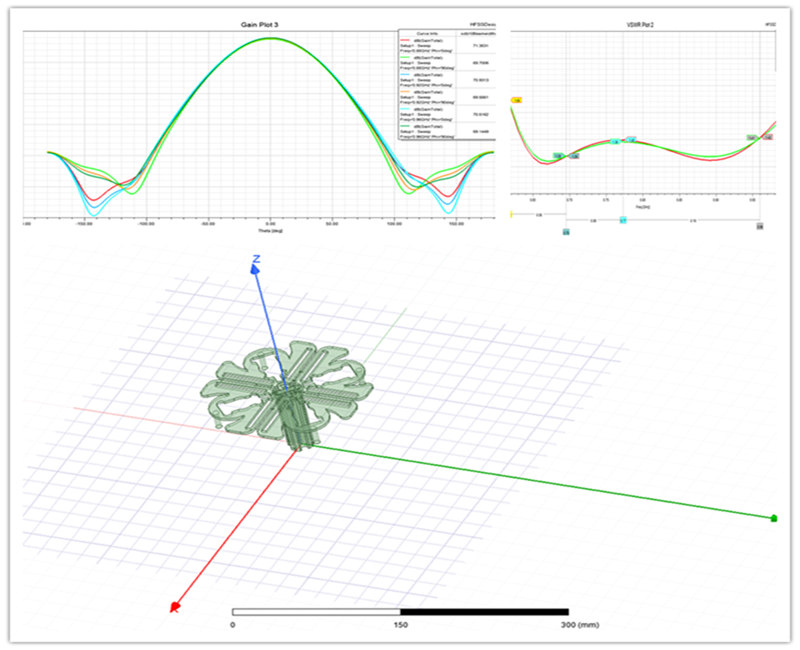4G LTE Antenna: A Complete Guide to Selection, Installation, and Signal Optimization- Our Technological Leaps

In today’s hyper-connected world, reliable cellular connectivity is critical for industries ranging from smart cities to remote telemedicine. A 4G LTE antenna serves as the backbone of stable communication, especially in areas with weak signal strength. At RF element, a leading manufacturer of wireless solutions, we specialize in high-performance low PIM 4G LTE antennas designed to meet diverse connectivity needs, from rural deployments to industrial IoT systems.
This guide will explore:
How to choose the best 4G LTE antenna for your application.
Step-by-step installation techniques for maximum signal gain.
Advanced optimization strategies to reduce interference.
Why 4G LTE Antennas Matter
Key Applications
4G LTE antennas are pivotal in scenarios where traditional cellular signals falter:
Rural Connectivity: High-gain directional antennas (e.g., 8dBi models) extend coverage in remote areas, reducing dead zones by up to 70% .
Industrial IoT: Rugged, IP67-rated antennas ensure reliable machine-to-machine communication in harsh environments.
Vehicular Systems: Compact, magnetic-mount antennas provide stable connectivity for fleet management and telematics .
Technical Advantages
RF element’s 4G LTE antennas incorporate low passive intermodulation (PIM) technology, minimizing signal distortion and interference. Our products support frequencies from 698–3800 MHz, ensuring compatibility with global LTE bands .
How to Choose the Best 4G LTE Antenna
1. Frequency Range and Compatibility
Verify the antenna’s frequency range matches your carrier’s LTE bands. For example:
700–2700 MHz: Ideal for multi-band coverage (common in North America and Europe).
4800 MHz: Future-proofing for hybrid 4G/5G networks .
2. Gain and Radiation Pattern
Omnidirectional Antennas (e.g., 6dBi): Suitable for urban areas with dispersed signal sources.
Directional Antennas (e.g., 8–10dBi): Focus signals in a single direction, ideal for rural or fixed-point applications .
3. Environmental Durability
For outdoor installations, prioritize:
IP67 waterproofing to withstand rain and dust.
UV-resistant materials for prolonged sun exposure.
Stainless steel mounting hardware for corrosion resistance .
4. MIMO Support
Multiple Input Multiple Output (MIMO) antennas (e.g., 2x2 or 4x4 configurations) enhance data throughput by leveraging spatial diversity. RF Element’s MIMO 6x6 antennas support up to 8km transmission ranges, perfect for long-distance IoT deployments .
Step-by-Step Installation Guide
1. Site Survey and Positioning
Use a signal strength app to identify optimal mounting locations.
Elevate antennas above obstructions (e.g., rooftops or poles).
2. Mounting Techniques
Magnetic Bases: For temporary setups on vehicles or metal surfaces.
Pole/Wall Mounts: Secure with U-bolts or angle brackets for permanent installations.
3. Cable Management
Use low-loss coaxial cables (e.g., LMR195 or RG58U) to minimize signal degradation.
Keep cable lengths under 15 meters to avoid attenuation .
4. Alignment and Testing
Point directional antennas toward the nearest cell tower (use tools like OpenSignal).
Test signal strength before finalizing the setup.
Optimizing 4G LTE Antenna Performance
1. Reduce Interference
Avoid mounting near power lines or heavy machinery.
Use ferrite cores on cables to suppress electromagnetic noise.
2. Software Tweaks
Update modem/router firmware for compatibility improvements.
Adjust LTE band priorities in router settings.
3. Regular Maintenance
Inspect connectors for corrosion every 6 months.
Clean antennas with a soft cloth to remove debris.
Case Study: Rural Connectivity Boost
A telecommunications provider in Southeast Asia deployed RF Element’s 8dBi directional 4G LTE antennas in remote villages. Post-installation metrics showed:
72% increase in signal strength.
45% reduction in dropped calls.
Seamless connectivity for telemedicine and e-learning platforms
Why Choose RF element?
As a top-tier 4G LTE antenna manufacturer, we offer:
Customization: Tailored gain, polarization, and mounting solutions.
Global Compliance: Products meet FCC, CE, and RoHS standards.
Technical Support: 24/7 engineering assistance for complex deployments .
Optimizing your 4G LTE antenna setup requires a blend of technical knowledge and practical experience. By selecting the right antenna, following best-practice installation steps, and leveraging RF Element’s expertise, you can achieve robust, interference-free connectivity for any application.
Explore RF element’s Solutions Today → 4G LTE Antenna
TAG:4G LTE Antenna: A Complete Guide to Selection, Installation, and Signal Optimization https://www.rfelement.com

